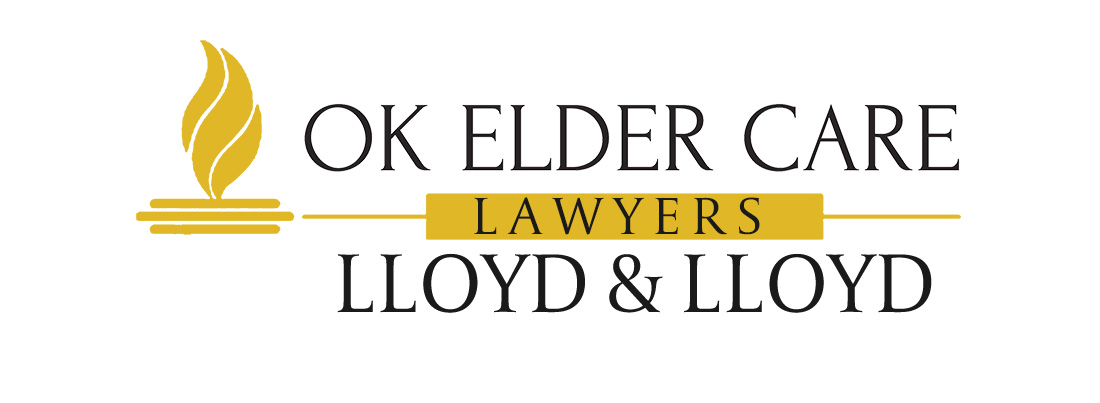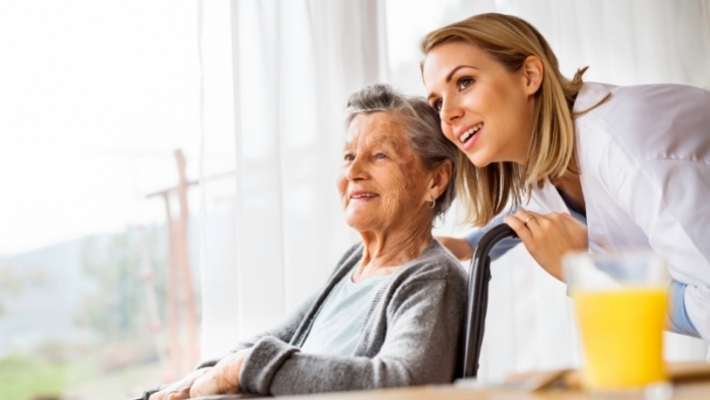Frequently Asked Questions
For nursing home abuse and elder abuse
Dealing with suspected nursing home or elder abuse of a loved one is incredibly challenging, and it’s natural to have many questions. Here, we’ve gathered answers to our most frequently asked questions to provide you with the information you need.
If your specific question isn’t addressed, or if you’d like more details, we’re here to help. We offer free consultations to discuss your case and review your options. Let us guide you through this difficult time and help you take the next steps toward protecting your loved one’s rights.
Need to talk to someone now?
Call us at 918-246-0200
or contact us below
What is elder abuse?
As defined by the National Center on Elder Abuse, any “knowing, intentional, or negligent act by a caregiver or any other person that causes harm or a serious risk of harm to an older adult” can be considered elder abuse,
Elder abuse comes in many forms but generally falls under these categories:
- Physical Abuse: Use of physical force in any way that causes harm or impairment
- Sexual Abuse: Any non-consensual sexual interaction of any kind
- Emotional & Psychological Abuse: Any treatment inflicting mental anguish or distress
- Neglect & Abandonment: Caregivers who fail in their duty to look after their elder patients
- Financial Abuse & Healthcare Fraud: Misappropriating assets, stealing money, or committing healthcare fraud against a patient
For more information about the different types of elder abuse and their warning signs, check out this blog post.
What are the warning signs of elder abuse?
The symptoms of abuse aren’t always obvious, especially for the non-physical abuses. Be on the lookout for any of these signs:
- Physical Abuse
- Unexplained bruises, cuts, scars or burns
- Broken bones
- Repeated or related injuries
- New side effects from medication
- Visible fear or discomfort when a caretaker is present
- Sexual Abuse
- Sudden changes in mood or behavior
- Torn or bloody clothes, especially underwear
- Sexually transmitted diseases or infections
- Bruises, cuts or lacerations, especially on both sides of the body or around the breasts, genitals, wrists or ankles
- Bleeding from the vagina or anus
- Emotional & Psychological Abuse
- Acting withdrawn or frightened
- Trouble sleeping
- Unexplained mood or behavioral changes
- Psychological trauma signs, like rocking back and forth or mumbling to themselves
- Depression, confusion or losing interest in hobbies or activities
- Neglect & Abandonment
- Body odor, dirty clothes and unkempt hair
- Messy, unclean or unsafe living conditions
- Unexplained weight loss or loss of appetite
- Bedsores or skin rashes
- Missing or broken dentures, eyeglasses, hearing aids or walkers
- Unexplained and/or repeated falls
- Financial Abuse & Healthcare Fraud
- Unexplained charges to cards or withdrawals from bank accounts
- Unpaid bills, suspended utilities, or threats of eviction
- Receiving multiple invoices for the same service, or invoices for treatments that weren’t done
- Missing financial statements or legal documents
- Incorrect information on medical or health insurance documentation
- Waived deductibles or co-payments without explanation
For more information about the different types of elder abuse and their warning signs, check out this blog post.
What do I do if I suspect elder abuse?
The first thing you should do is talk to your loved one. However, be aware that sometimes abuse victims deny the abuse for fear of the repercussions from the abuser.
If you still have concerns after talking to your loved one, refer to these resources and contact the proper authorities:
- File a complaint directly to the Oklahoma State Department of Health’s Long Term Care Service here (near the bottom of the page, above the Contact Information).
- File a complaint directly to the Oklahoma State Department of Human Services here.
- The Department of Justice’s Elder Justice Initiative provides resources specifically for Oklahoma.
- The National Center for Victims of Crime’s Financial Crime Resource Center can help with identity theft and other financial crimes.
- FINRA has a Securities Helpline for Seniors who have investment or brokerage accounts.
Call Lloyd & Lloyd directly at 918-246-0200 or contact us here and let us help you get the justice your loved one deserves.
Are there criminal penalties in Oklahoma for abusers?
Elder abuse is unfortunately all too common. It’s unconscionable, but the Department of Justice estimates that 1 in 10 elderly persons are abused each year, but only 1 in 23 of such cases are reported.
Thankfully, several federal and state laws exist to protect seniors and carry severe criminal and civil penalties for abusers.
At the federal level, the Elder Justice ACT (EJA) of 2010 enacted new reporting requirements for nursing homes and long-term-care facilities, along with their owners, operators, agents, employees, or contractors. The EJA imposes steep civil penalties for failing to report elder abuse cases.
At the state level, Oklahoma has 21 O. S. § 843.1, which defines “Abuse, Neglect or Financial Exploitation by a Caretaker” as a felony, carrying a maximum 10-year prison sentence and a maximum fine of $10,000. If the abuse is sexual in nature, the prison penalty increases to 15 years maximum.
21 O. S. § 843.1 is an “85% crime,” which is reserved for the most harmful criminal offenses in Oklahoma. Persons convicted of an 85% crime must serve no less than 85% of any prison sentence to be eligible for parole consideration. That means if a caretaker is sentenced to 10 years in prison for elder abuse, they must serve 8.5 years before they’re even eligible to be considered for parole.
Refer to these resources for help navigating these difficult waters:
- File a complaint directly to the Oklahoma State Department of Health’s Long Term Care Service here (near the bottom of the page, above the Contact Information).
- File a complaint directly to the Oklahoma State Department of Human Services here.
- The Department of Justice’s Elder Justice Initiative provides resources specifically for Oklahoma.
- The National Center for Victims of Crime’s Financial Crime Resource Center can help with identity theft and other financial crimes.
- FINRA has a Securities Helpline for Seniors with investment or brokerage accounts.
Call Lloyd & Lloyd directly at 918-246-0200 or contact us here and let us help you get the justice your loved one deserves.
How can I prevent elder abuse?
Being aware of the risks of elder abuse and remaining vigilant are the best ways to prevent harm to your loved ones. The NCEA provides a fact sheet to breaks things down nicely.
Apart from that, simply staying connected to your elderly loved ones goes a long way to keeping them safe. Social isolation is a major risk factor for elder abuse. It’s sad to say that seniors left on their own are vulnerable to abuse—they’re eager to connect with anyone, unable to comprehend what’s happening, and have no one looking out for them.
Make it a point to visit your elderly loved one. Stop by unannounced with flowers or chocolates or a hug. Call them regularly or keep in touch via text. It doesn’t take much, but those little gestures make all the difference.
If you suspect abuse at the hands of a nursing home or long-term care facility, call Lloyd & Lloyd at 918-246-0200.
How common is nursing home abuse?
On average, there are 2.6 falls per nursing home resident per year with 1,800 deaths resulting from falls. Over 200,000 cases of bedsores occur in the United States every year. Nursing home abuse is unfortunately common in the United States.
How can I tell if a fall was preventable?
The fact that elderly people fall more often than others is nothing new. But many nursing home falls can easily be prevented when basic precautions are taken. Bed or chair alarms, bed rails, hip pads, low beds, toileting plans, and more are simple precautions nursing homes should take to reduce the frequency and severity of falls.
What are the symptoms of PEG tube and catheter neglect?
Catheters and PEG tubes are only required in specific medical cases. When they are necessary, they must also follow strict cleaning and changing schedules. Cloudy and brown-colored urine are symptoms of an unchanged catheter. Unfortunately, these symptoms develop over long periods of time. But those symptoms can be fatal once manifested. If your loved one uses a PEG tube or catheter, be sure to ask when the tubes were last cleaned or replaced and make sure a strict schedule is published and followed at the nursing home.
What is a bedsore or pressure ulcer?
There are over 200,000 cases of bedsores per year in the United States. They are the result of continued pressure to the skin and occur most commonly on the heels, hips, and tailbone, but are common on other bony areas of the body. If a resident’s health prevents them from moving often, they can be at risk of developing bedsores. Read more about bedsores here: http://mayocl.in/2hjAKSH
What are the symptoms of malnutrition?
Malnutrition occurs when the body fails to receive enough nutrients. This results most commonly from poor diets. People above 60 years old are at the highest risk of malnutrition. Symptoms include rapid weight loss, dizziness, and fatigue. Read more about senior malnutrition here: http://mayocl.in/1NtxRbP
What are the symptoms of dehydration?
Because adults typically don’t feel thirsty until after they are dehydrated, it can be difficult to self-diagnose dehydration. If a person is experiencing extreme thirst, infrequent urination, dark urine, fatigue, dizziness, or confusion, they might be dehydrated. Read more about dehydration here: http://mayocl.in/2ef9OGz
SCHEDULE A CONSULT WITH THE LEGAL EXPERTS AT LLOYD & LLOYD
No family wants to face having to put a loved one into a nursing home. However, if it is necessary to take this step, the family deserves to know that the promises of the nursing home to take care of their parent(s) are true.


